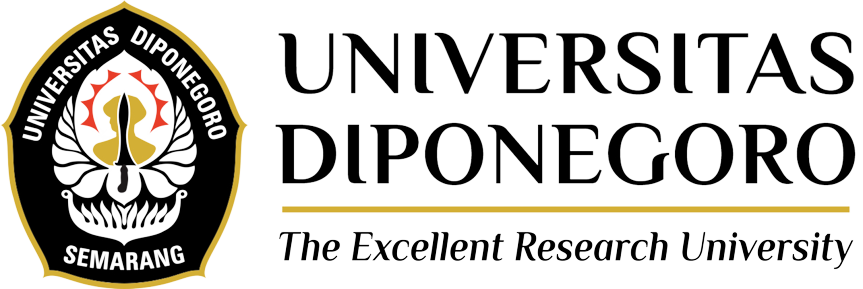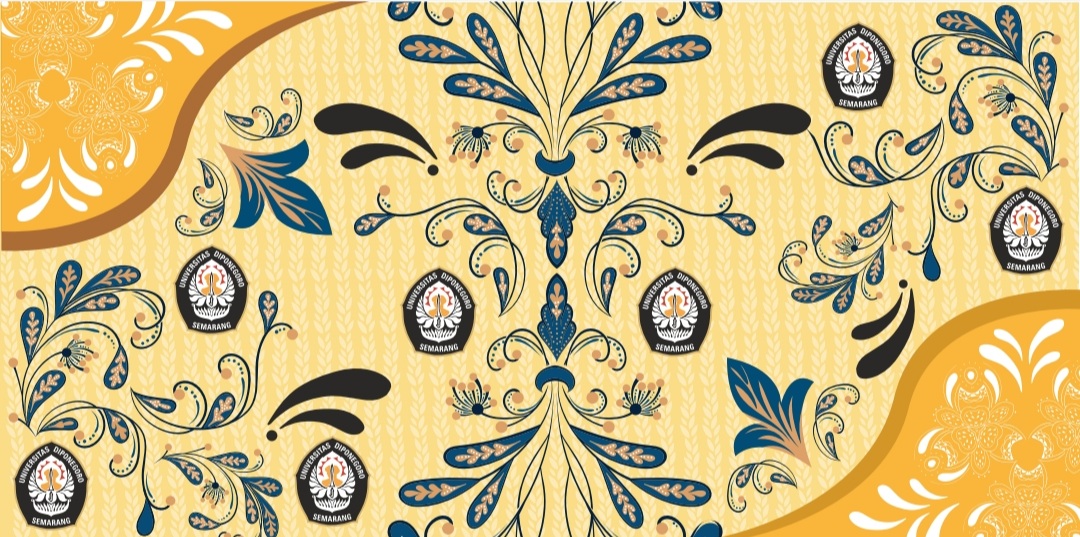Bengle Village, Talang District, Tegal Regency is a center for Tegal batik crafts. One of the innovations carried out by the 2022/2023 Diponegoro University Community Service Team (KKN) in Bengle Village under the guidance of Field Supervisor, Dr. Hersugondo, S.E., M.M., Dr. Catur Kepirianto, M.Hum. and Ardiana Alifatus Sa’adah S.Si., M.Si. is to make the Diponegoro University logo motif on Tegalan batik as a form of creativity for the KKN team students in the village. It is hoped that the new motif with the Diponegoro University logo will enrich Tegalan batik motifs from Bengle Village and further expand the batik market to further excite artisans to develop their businesses after 2 years of vacuum without orders during the Covid-19 pandemic.
Tegal batik was first introduced at the end of the 19th century brought by King Amangkurat I (Sunan Amangkurat Mas) who at that time was enjoying the North Coast with his followers then he passed on his knowledge of batik to his grandchildren so that it spread to the community. Batik motifs at that time were only dominated by green and brown colors. Over time, Tegalan Batik has various types and colors, including flora and fauna batik motifs. Tegal City Batik has a characteristic with fauna motifs that are motivated by the life of coastal communities, while Tegal Regency Batik is dominated by flora such as Mawur Rice Batik with patterns in the form of white dots like spilled rice combined with several flowers.
“The inspiration for the creation of Tegalan Batik with the Undip Logo Motif is because several villages in the Talang sub-district are the centers of the Batik Industry. And of course this adds a variety of motifs to make it more developed with various types. Meanwhile, their marketing, because they are relatively expensive, is also limited, so they cannot reach a wider audience. Especially during a pandemic, you could say the turnover was maybe 10-20% of usual. For this reason, we invite students who are doing KKN to participate by making new innovations, one of which is by making the Tegalan Batik motif with the Undip logo,” said Dr. Hersugondo.
“There are several batik motifs that have been made by students, around 5 motifs and will be displayed at the Expo. Thus, there will be more variations and it will be possible for Undip students and employees to use it. The batik itself consists of 2 types, namely Written Batik and Printing Batik, depending on the market to be targeted. For the middle and upper market, Batik which will be marketed is Written Batik, and for the lower middle market, Batik which will be marketed is Printed Batik, because it is in accordance with the capabilities of consumers,” he continued.
“While the media used is media marketing through social media, because the batik market is very broad. There are very few consumers around the craftsmen and their ability to buy them is limited. So, it must be marketed more broadly and reach farther so that those who are not familiar with Tegalan Batik can become consumers,” added Dr. Hersugondo.
The process of making written batik is relatively long because the average work of craftsmen is housewives. One piece of batik cloth can be done in 1 (one) week at the fastest, and the longest is 1 (one) month. This is what makes the price of hand-written batik expensive, especially batik that has high quality or is smooth with quality fabrics. As for Printed Batik, in 1 (one) day it can produce 10 (ten) pieces of Batik cloth.
“For the Undip motif, the batik maker does not yet have the Undip logo stamp, so we will develop it later through the LPPM community service program by making canting for the Undip logo so that it can be produced more and more widely. The craftsmen also don’t have a stamp for Printed Batik because we just introduced it during KKN about last month. Hopefully the Tegalan batik craftsmen will continue to work and be enthusiastic,” he concluded. (Lin/Nuril/Arbi – Public Relations)

